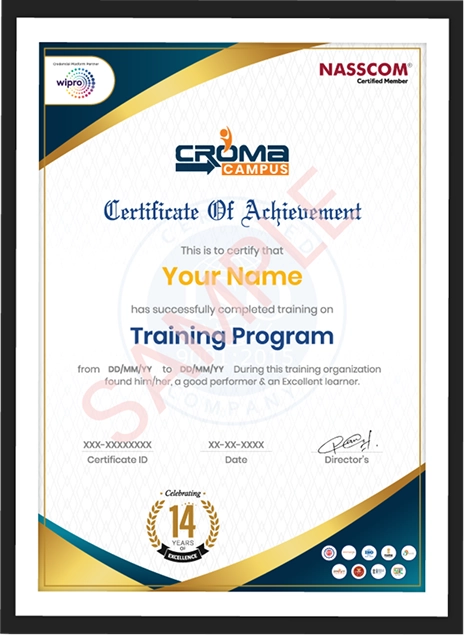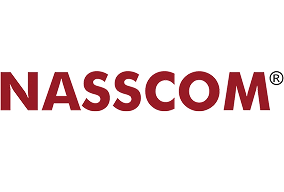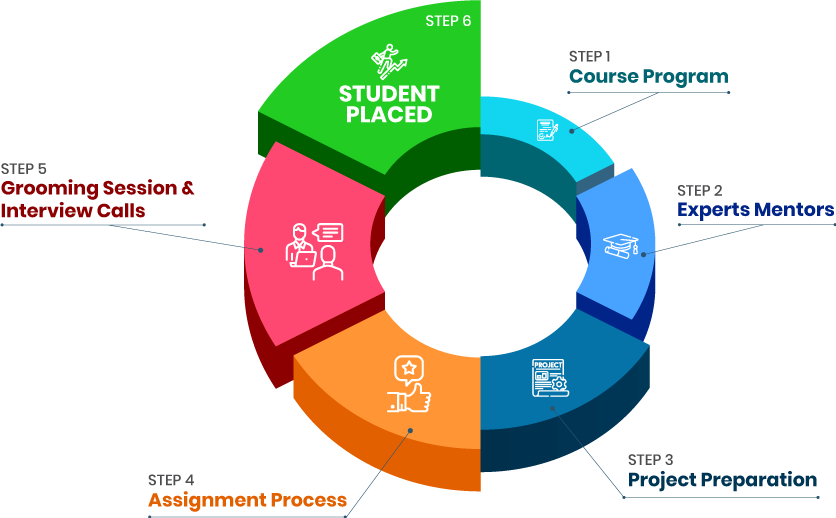Course Design By
Nasscom & Wipro
Understanding how software is made: Learn about how software is created and what happens in each stage, from planning to development to testing.
Testing software: Understand different types of tests, like testing individual parts of a program (Unit Testing) or testing the whole software system (System Testing).
Writing and running tests: Learn how to create test cases, run them, and record the results to make sure everything works right.
Tracking bugs: Learn how to find and report bugs, and follow them through to be fixed using tools like JIRA or Bugzilla.
Reporting results: Get practice writing reports to show how the tests went, what went wrong, and what needs to be fixed.
Starting salary: You can expect to earn between 24,00,000 - 33,00,000 per year as a new Manual Tester.
As you gain more experience, your salary can go up to 36,00,000 - 48,00,000.
In bigger cities like Toronto or Vancouver, salaries tend to be higher because there are more tech companies.
Test Lead: Manage a team of testers and make sure all tests are done correctly.
Test Manager: Oversee the entire testing process for different projects in a company.
Software Quality Engineer: Focus on making sure the software is of high quality and meets standards.
Automation Tester: Learn how to use automation tools (like Selenium) to test software automatically.
Hands-on work: Manual testing lets you get directly involved in testing the software, helping you learn its features in-depth and catch issues that automated tools might miss.
Lots of job opportunities: Many companies still need Manual Testers, especially for checking user interfaces (UI/UX Testing) and doing exploratory testing to see how the software behaves in different situations.
Great starting point: If you're new to the tech industry, Manual Testing is a good entry point, and you can later transition into Automation Testing or Test Management.
Manual Tester: Test software by following detailed instructions, finding bugs, and reporting them.
Test Analyst: Plan, create, and execute tests to make sure software works as it should.
Quality Assurance (QA) Engineer: Ensure that the software meets the necessary quality standards.
Test Lead: Manage a team of testers, assign tasks, and ensure everything is tested properly.
Test Manager: Oversee multiple testing projects and ensure they run smoothly from start to finish.
Tech Companies: Software companies in cities like Toronto and Vancouver always need testers to make sure their products work correctly.
Finance: Banks and insurance companies need testers to make sure their software is secure and works correctly for transactions.
Healthcare: Medical software and health-related apps also need testers to ensure they work well and keep patient data safe.
Retail and E-Commerce: Online stores and apps rely on Manual Testers to make sure their websites and apps provide a smooth shopping experience.
Telecom: Telecommunication companies need Manual Testers to ensure their apps and networks are bug-free.
JIRA: A tool used to report and track bugs or issues found during testing.
TestRail: A tool used to organize and track test cases.
Selenium: While primarily used for automated testing, you will learn basic skills in this tool, which will help you if you ever move into Automation Testing.
Bugzilla: Another tool for tracking bugs and defects in software.
Excel: Used to write test cases and keep track of defects and test results.
Manual Tester: Manually testing apps and software, finding bugs, and ensuring everything works as expected.
Test Analyst: Writing test cases and executing tests to make sure the software does what its supposed to.
Quality Assurance Engineer: Making sure software meets quality standards throughout development.
Test Lead: Leading a team of testers and overseeing testing projects.
Test Manager: Managing the testing process across multiple projects, ensuring everything runs smoothly.
The Official Certification Fee typically ranges between 7,500 to 15,000 (CAD 100 to CAD 200).
Resume Building: Get help creating a professional resume to highlight your testing skills.
Mock Interviews: Practice interviews to help you feel more confident when youre looking for a job.
Job Assistance: Many training centers help you find job opportunities through their network of companies and job postings.
Internships: Some institutions also offer internships, so you can gain real-world experience in software testing.
Project 1: Testing a website to make sure it functions properly.
Project 2: Running tests on a mobile app to make sure updates dont break any features.
Project 3: Testing an e-commerce website to ensure a smooth customer experience.
we train you to get hired.

By registering here, I agree to Croma Campus Terms & Conditions and Privacy Policy
+ More Lessons
Course Design By
Nasscom & Wipro
Course Offered By
Croma Campus
Stories
success
inspiration
career upgrade
career upgrade
career upgrade
career upgrade
You will get certificate after
completion of program
You will get certificate after
completion of program
You will get certificate after
completion of program
in Collaboration with

Empowering Learning Through Real Experiences and Innovation
we train you to get hired.
Phone (For Voice Call):
+91-971 152 6942WhatsApp (For Call & Chat):
+91-971 152 6942Get a peek through the entire curriculum designed that ensures Placement Guidance
Course Design By
Course Offered By
Ready to streamline Your Process? Submit Your batch request today!
Manual Testing is when testers check software manually without using tools, while Automated Testing uses scripts and tools to test software automatically.
No, Manual Testing doesn’t require programming skills. The focus is on writing and running tests to find bugs and ensure software works.
Yes, after gaining experience in Manual Testing, you can move into roles like Test Lead, Test Manager, or even Automation Tester.
Yes, it’s still widely used for checking user interfaces (UI/UX Testing) and doing more hands-on, real-world tests that automation can’t always handle.
The course usually lasts 4 to 8 weeks, depending on the pace of the program.

Highest Salary Offered
Average Salary Hike
Placed in MNC’s
Year’s in Training

fast-tracked into managerial careers.
Get inspired by their progress in the
Career Growth Report.
FOR QUERIES, FEEDBACK OR ASSISTANCE
Best of support with us
For Voice Call
+91-971 152 6942For Whatsapp Call & Chat
+91-9711526942




















